Global anthropogenic methane emissions, 1970-2022
Methane (CH4) is a hydrocarbon and a major component of natural gas. It is a potent greenhouse gas (GHG), so its presence in the atmosphere affects the earth’s temperature and climate system. Methane belongs to a class of so-called “super pollutants” that simultaneously contribute to climate change and degrade the health of people and ecosystems. […]
The cost and potential for global methane emissions reductions from fossil fuels
Methane belongs to a class of so-called “super pollutants” that simultaneously contribute to climate change and degrade the health of people and ecosystems. It has about 30 times the impact on global warming per unit mass compared to carbon dioxide over a 100-year lifetime (83 times larger over 20 years).1 Methane is responsible for about […]
Explore GHG emissions in the United States
This could be a paragraph for the data story, This could be a paragraph for the data story,This could be a paragraph for the data story, This could be a paragraph for the data storyThis could be a paragraph for the data story, This could be a paragraph for the data story, This could be […]
Oil spills: when, where, how big?

Since the birth of the modern oil industry in the late 19th century, tens of millions of wells have been drilled, and upwards of 1.5 trillion barrels of oil have been extracted. That is enough oil to fill about 96 million Olympic-sized swimming pools! Onshore wells have been drilled in nearly every type of terrestrial […]
Global anthropogenic emissions of carbon dioxide, 1750-2022
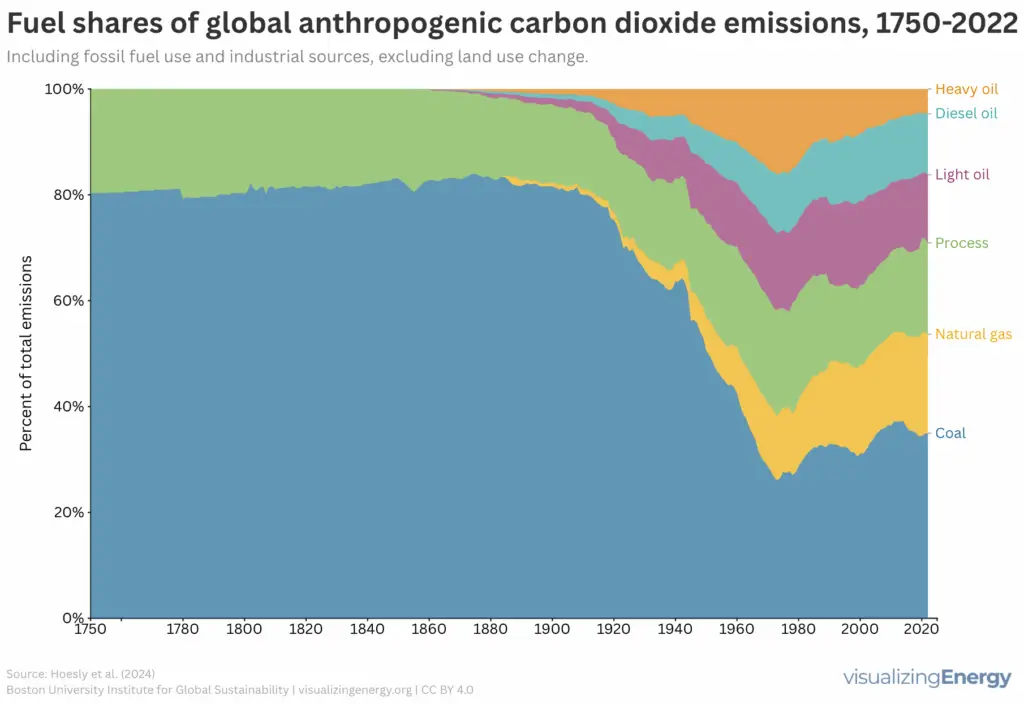
Anthropogenic carbon dioxide emissions increased from about 9,000 kilotons in 1750 to approximately 36 million tons in 2022—a 4,000-fold increase. Economic growth and the shift to fossil fuels that accompanied the Industrial Revolution drove this rise in emissions. Between 1850 and 1900, there were only two years in which emissions did not increase from the previous year.
Global anthropogenic ammonia emissions, 1750-2022
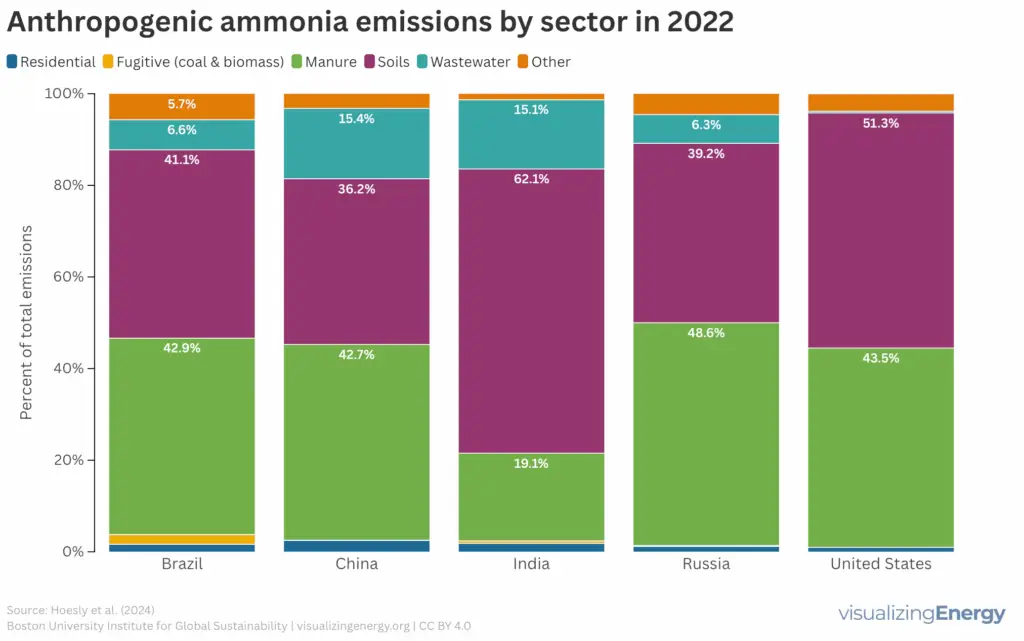
Ammonia (NH3) feeds and pollutes the world.1 The synthesis of ammonia underpins all nitrogen fertilizers, and without their applications it would be impossible to feed, at current levels, nearly half of today’s 8 billion people. China could not feed 40% of its population without nitrogen fertilizers.2 This makes ammonia one of the most important materials […]
Global anthropogenic carbon monoxide emissions, 1750-2022
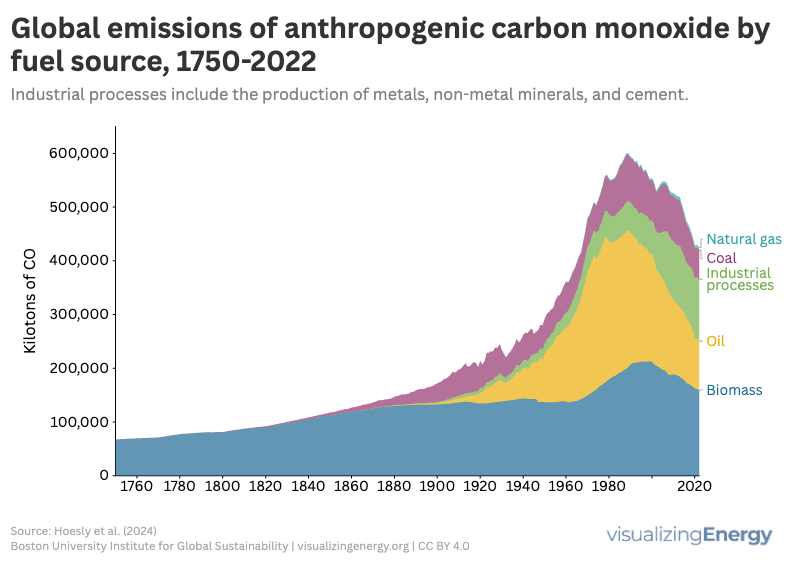
Carbon monoxide (CO) is a toxic, colorless gas from incomplete combustion of fuels, leading to potential health hazards like headaches and confusion. Residential sources produce significant CO emissions, impacting 2.4 billion people reliant on biomass. Globally, emissions peaked in 1989, but have since declined due to regulations and technological advancements in combustion efficiency.
Global anthropogenic nitrogen dioxide emissions, 1750-2022

Facebook Twitter Youtube In atmospheric chemistry, NOx (“knocks”) is shorthand for nitric oxide (NO) and nitrogen dioxide (NO₂)—the nitrogen oxides most relevant to air pollution. These gases contribute to the formation of several of the most harmful air pollutants. The European Union, the United States, and other countries regulate emissions of nitrogen dioxide as an […]
Wetlands and methane: a growing feedback in the global carbon cycle
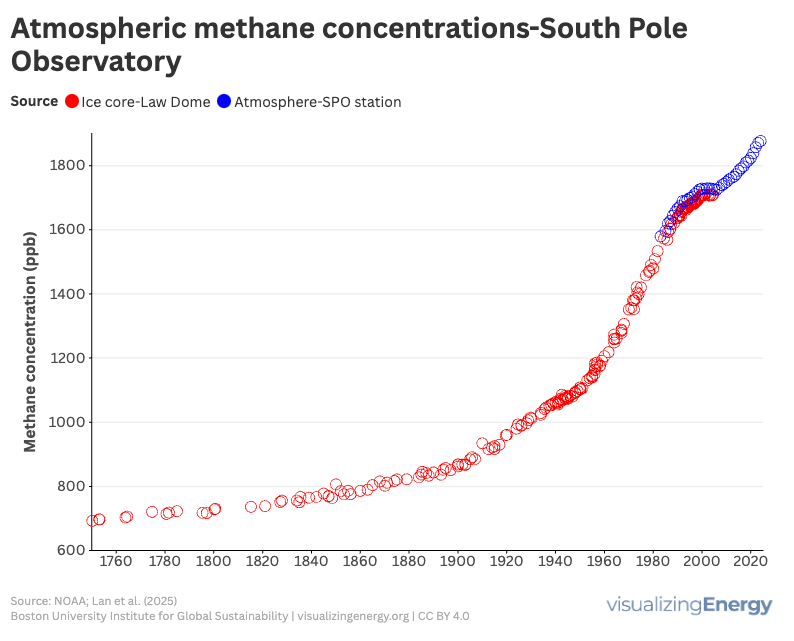
Methane is a potent greenhouse gas that has about 30 times the impact on global warming per unit mass compared to carbon dioxide over a 100-year lifetime (83 times larger over 20 years). Methane is responsible for 0.5°C of today’s warming representing ~30% of total human-caused warming.1 The concentration of atmospheric methane reached 1922 parts […]
Global anthropogenic nitrogen dioxide emissions, 1750-2022
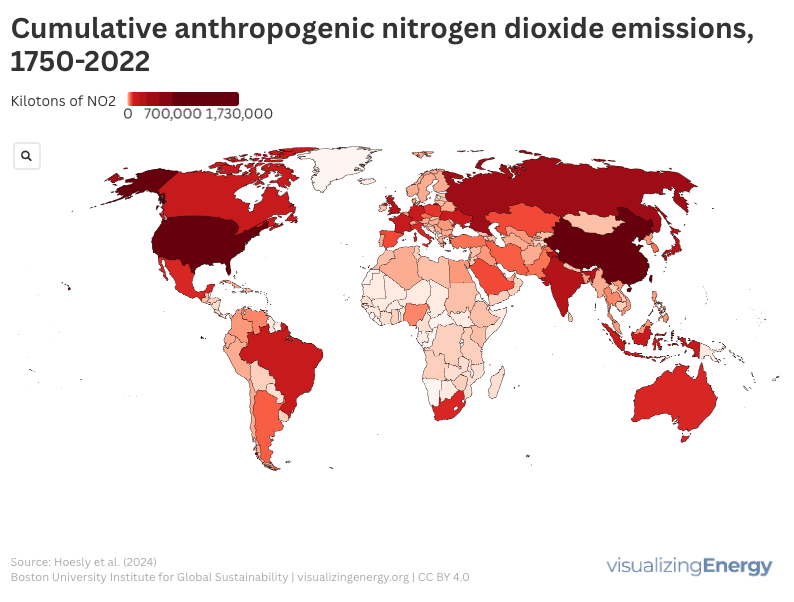
NOx, comprising nitric oxide and nitrogen dioxide, significantly impacts air pollution and health, causing respiratory issues and contributing to harmful pollutants. Mainly emitted from transportation and industrial activities, NOx levels vary globally. Efforts to reduce emissions include regulatory policies and technology advancements, along with a shift towards cleaner energy sources.
